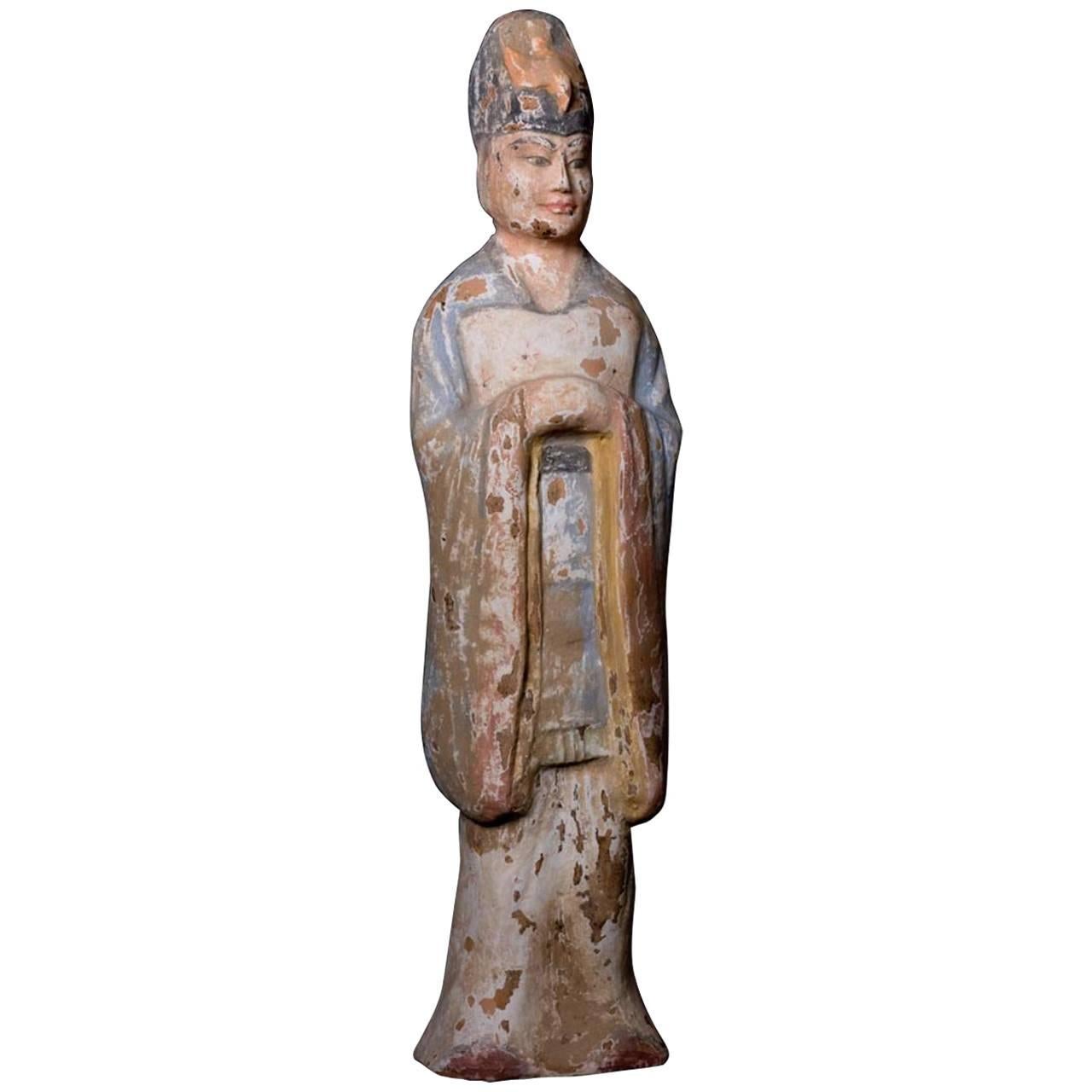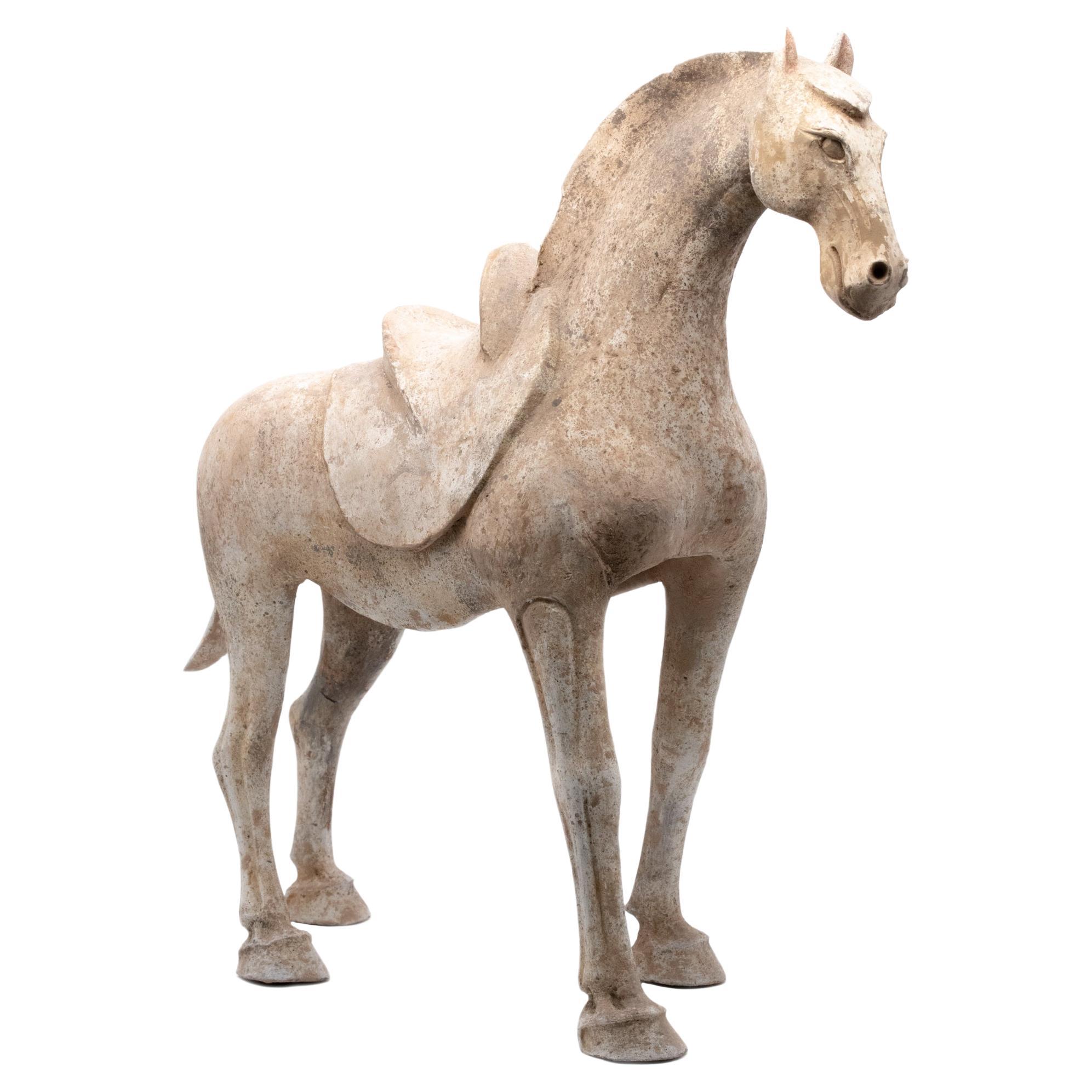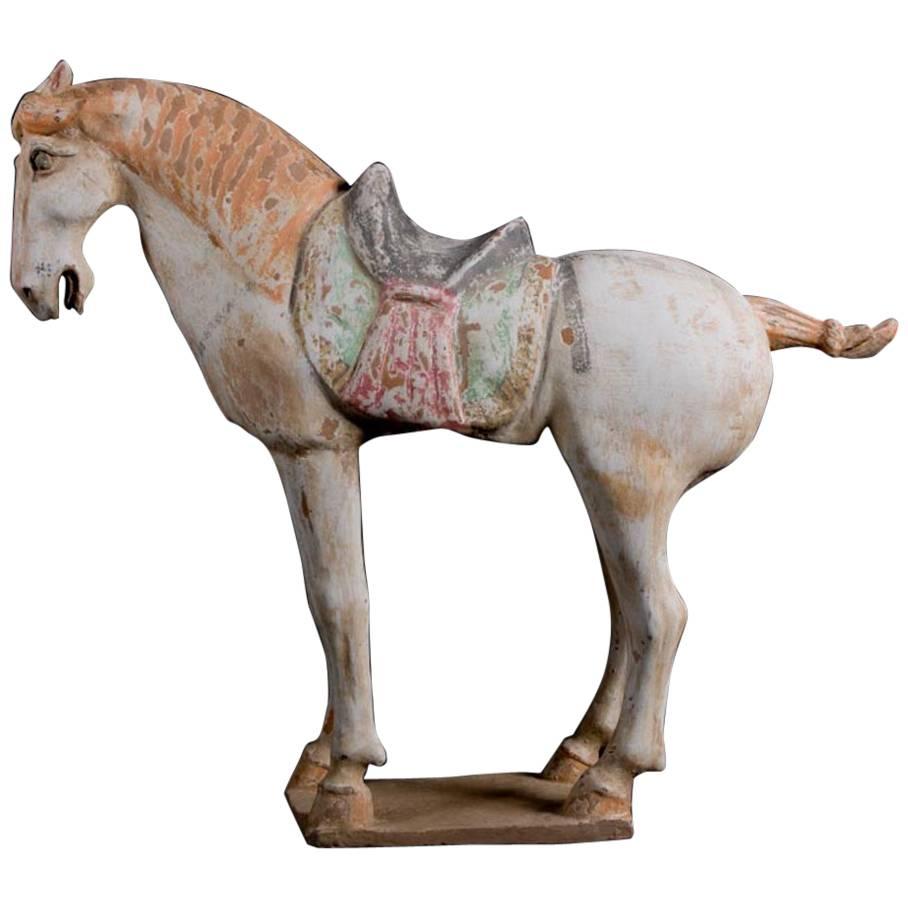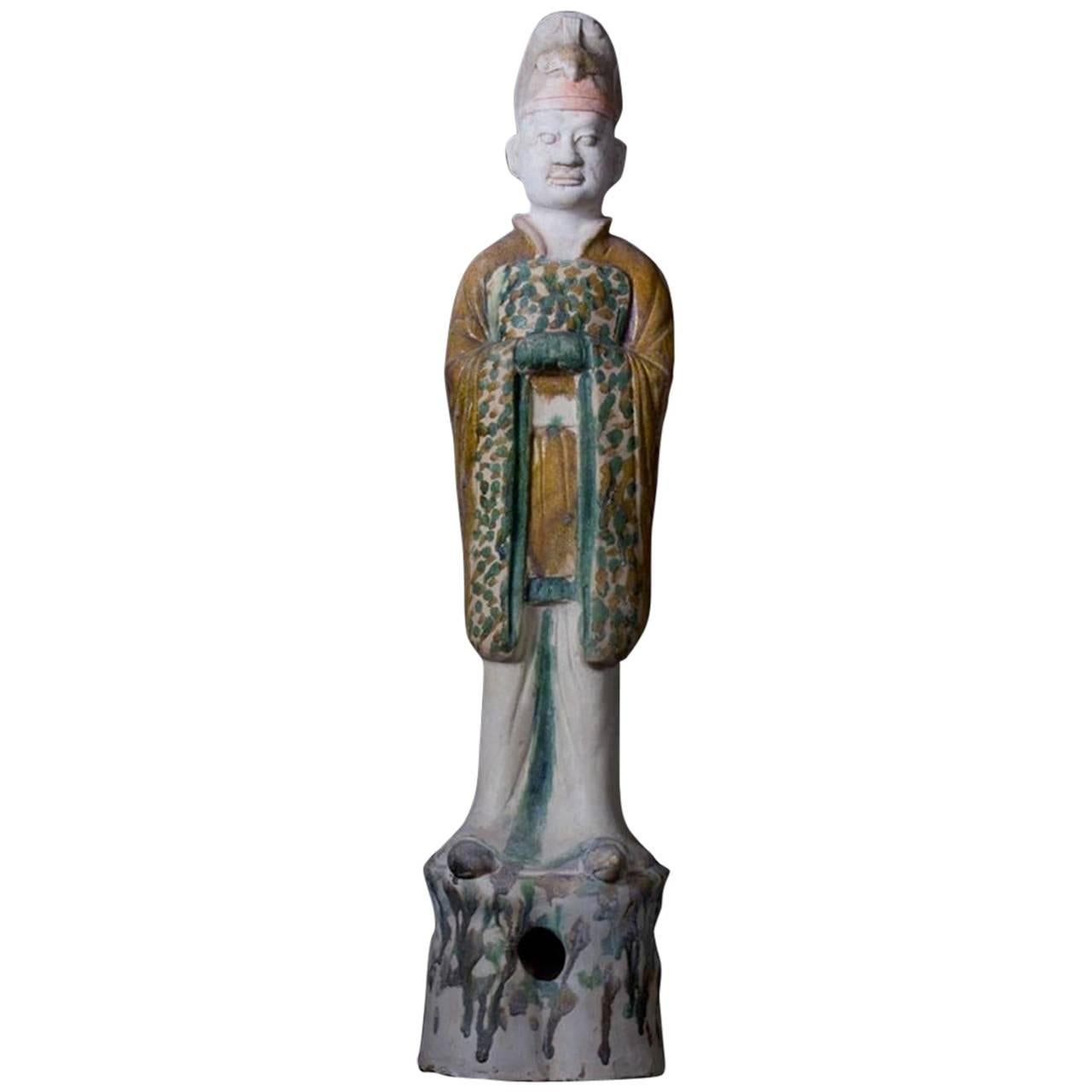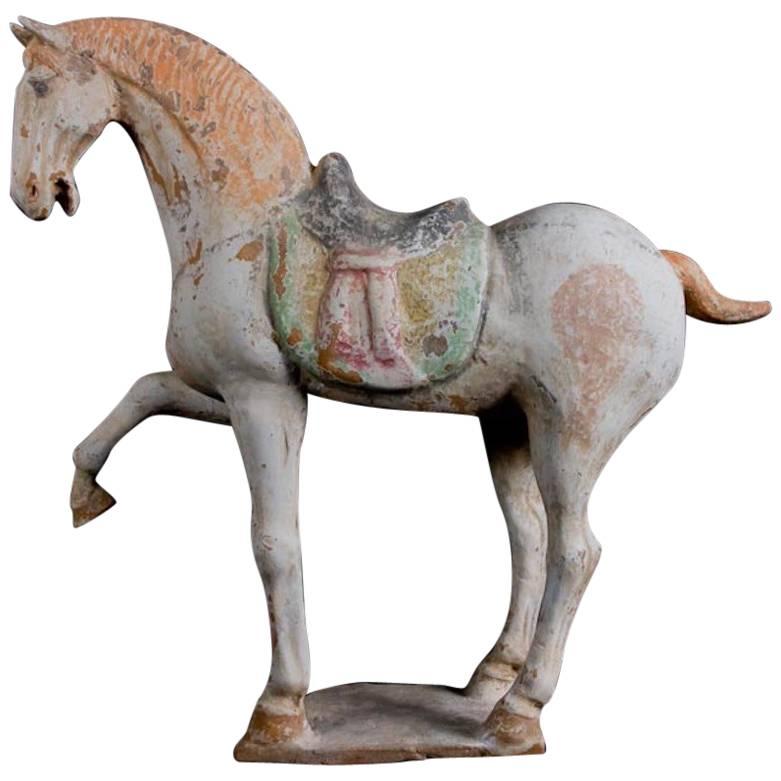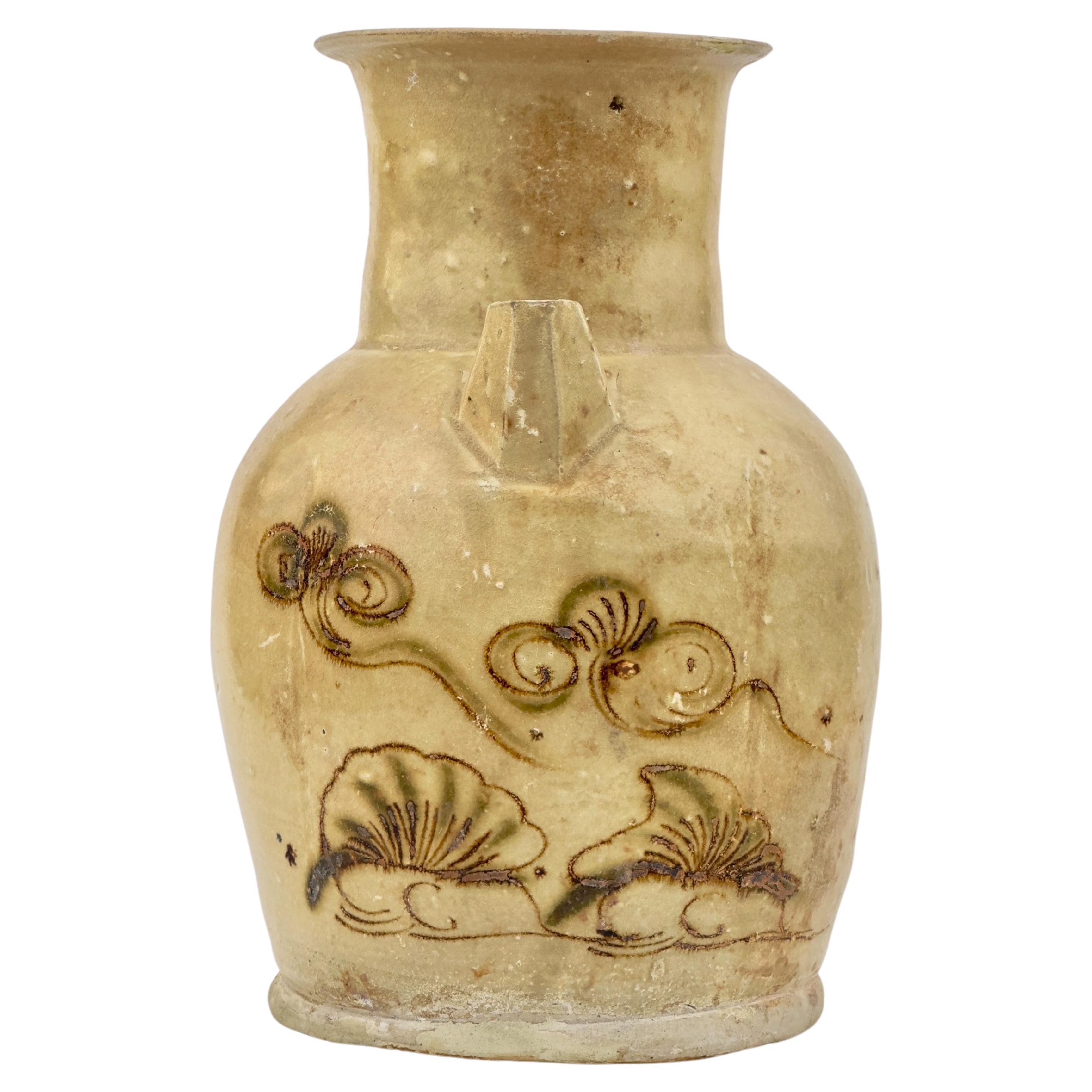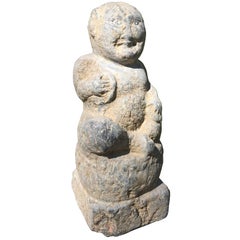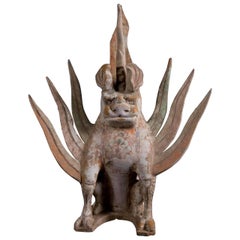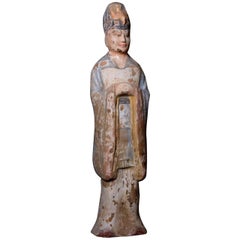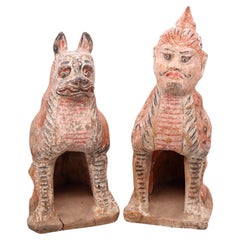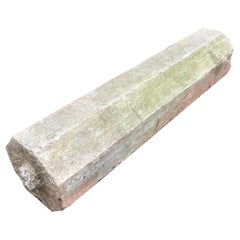
China Important Stone Buddhist Memorial Pillar "Chuang" Tang Dynasty, 618-907
View Similar Items
Want more images or videos?
Request additional images or videos from the seller
1 of 19
China Important Stone Buddhist Memorial Pillar "Chuang" Tang Dynasty, 618-907
About the Item
- Dimensions:Height: 59 in (149.86 cm)Diameter: 14 in (35.56 cm)
- Style:Tang (Of the Period)
- Materials and Techniques:
- Place of Origin:
- Period:
- Date of Manufacture:15th Century and Earlier
- Condition:Wear consistent with age and use.
- Seller Location:South Burlington, VT
- Reference Number:1stDibs: LU1289216410521
About the Seller
5.0
Platinum Seller
These expertly vetted sellers are 1stDibs' most experienced sellers and are rated highest by our customers.
Established in 1990
1stDibs seller since 2015
2,205 sales on 1stDibs
Typical response time: 1 hour
More From This SellerView All
- Important Ancient Chinese Effigy Pug Dog, Ming Dynasty 1368-1644Located in South Burlington, VTChina, a carving of a canine “Pug”, Ming Dynasty, 1368-1644 CE Dimensions: 38 cm, 15” High Photographs taken indoors and out of doors for your viewing pleasure. The hand carved limestone beast shown on its haunches with naturalistic joyful expression and a well defined compact head, ears, noes, eyes, feet, and tail parted to one side on reverse with distinctive collar ornament seated four square on a thick base all-over showing a weathered surface from significant age. Formerly exhibited “Asia Week” New York City, Fuller Building, Hutton Gallery 2006. Provenance: ex collection luoyang, Henan Province, China. Includes custom display base as shown Catalog reference: 35 years collecting 35 treasures, Number 35, p.76 (photo) In ancient China, it is a well-known fact that several types of small dogs were bred and were favored pet gifts between emperors and kings including Lion Dogs, Pekingese and Lo-sze breeds. Some Lo-sze are pictured wearing collars with bells a frequent combination fancied by European royalty of the seventeenth and eighteenth centuries. Lo-sze or pugs were prized for their compact body, good bones, flat face, square jaw, short coat, curled tail, side set back ears, and temperate disposition. History: Placing stone animals in important tombs can be traced back at least to the Qin Dynasty (221-206 BCE), some two thousand years ago. In ancient times, stone animals and human figures placed before imperial tombs symbolized royal power and privilege in addition to decorative functions. The first Ming tomb...Category
Antique 15th Century and Earlier Chinese Ming Sculptures and Carvings
MaterialsLimestone
- China Ancient Stone Entertainer, Han Dynasty 200 ADLocated in South Burlington, VTChina an ancient limestone figure of an Entertainer replete with hands holding tambourines and a top a drum, -for the afterlife- , Han dynasty 206 BC...Category
Antique 15th Century and Earlier Chinese Han Sculptures and Carvings
MaterialsLimestone
- Ancient China Monumental Stone Ram Han Dynasty, 206BC-220ADLocated in South Burlington, VTChina, a large votive model of a stone ram, Han dynasty (206BC-220AD) Dimensions: 45cm, 18 inches high and 65cm, 26 inches length and 25cm, 10 inches wi...Category
Antique 15th Century and Earlier Chinese Han Sculptures and Carvings
MaterialsLimestone
- Important Chinese Ancient Bronze Money Tree, 25BC-220ADLocated in South Burlington, VTChina, Ancient Bronze “Money Tree” Yaoqian Shu with original pottery base, Han dynasty (25 BCE – 220 CE) Dimensions: 155cm, 62 inches high A sculpted terracotta pottery base in the form of a tortoise with attendants and inserted with five individual bronze pole segments with twenty four individual hanging bronze open work money “branches” attached in tiers, four per tier and topped with a figure of a bronze phoenix as apex most bearing varying degrees of malachite and azurite encrustation from ancient burial. Important Description Details: Pottery "tortoise" base: 14.5" high and 11" wide Bronze sections: 7pcs pole bronze sections approximately 8" length each 1pc top "phoenix" bronze section approximately 7" high and 6" wide 20 pcs long bronze hanging wings approximately 10" long and 5" wide each 4 pcs short bronze hanging wings (near top) approximately 7" long and 4" wide each Total 32 pcs with ancient green and blue azurite patina. Catalog reference: Schneible Fine arts catalog - 35 Years Collecting Treasures- Number 11p. 28 (see photos) Provenance: Provenance: Private family collection formerly exhibited “Asia Week” New York City, Fuller Building, Zabriskie Gallery, 2008. History of money trees: In the late Han Dynasty tombs...Category
Antique 15th Century and Earlier Chinese Han Antiquities
MaterialsBronze
- Chinese Ancient Stone Male Figure, 206 BC-220 ADLocated in South Burlington, VTChina, a rare hand carved stone male figure from the Han dynasty (206 BCE-220 CE). Dimensions: 16 inches tall on its custom stand and and 6 inches wide Condition: old patina wi...Category
Antique 15th Century and Earlier Chinese Han Sculptures and Carvings
MaterialsTerracotta
- China Important Carved Stone "Penjing" Garden Table, Qing Dynasty ‘1644-1911’Located in South Burlington, VTChina, a carved antique stone Penjing or painting form garden table, middle Qing dynasty (1644-1911), limestone, three pieces Dimensions: 34 inches high and 55 inches long and 16 in...Category
Antique Early 19th Century Chinese Qing Sculptures and Carvings
MaterialsLimestone
You May Also Like
- Chimera (Pixiu) Terracotta Mythological Being - Tang Dynasty, China '618-907 AD'Located in San Pedro Garza Garcia, Nuevo LeonMagnificent Mythological Being "Chimera" with Human Face and Flaming Rays Halo. Orange Terracotta with Traces of Stucco and Painting. This creature is commonly known as Pixiu. Fierc...Category
Antique 15th Century and Earlier Chinese Tang Antiquities
MaterialsTerracotta
- Very Elegant Tang Dynasty Dignitary in Orange Terracotta, China '618-907 AD'Located in San Pedro Garza Garcia, Nuevo LeonVery elegant terracotta dignitary in blue and red robes standing with the hands joined at the chest. He wears a blue headdress with a bird at its center. Orange Terracotta This gorg...Category
Antique 15th Century and Earlier Chinese Tang Antiquities
MaterialsTerracotta
- China 618-907 AD Tang Dynasty Pair Of Polychromate Earth Spirits ZhenmushouLocated in Miami, FLPair of Earths Spirits "Zhenmushou" from the China Tang Dynasty 618-907 AD. A beautiful and rare pair of "Earths Spirits guardians" from the Yunnan province region in the ancient China. This was created in clay earthenware pottery during the Tang Dynasty period between 618 and 907 AD. Featuring the molded figures of two seated guardians with decorations with polychrome pigmentations. The figures are seated on their haunches with cloven hooves planted firmly on the base looking forward with their front legs in a straight position. Both with face and body alert expressions on a rectangular base. Earth spirits usually appear in pairs, one with a human head and the other with a lion head. Their supernatural powers, indicated by antlers, spiky flanges and flames, enable them to confront evil spirits and protect any precincts within their gaze. Have been believed to protect the living by keeping the spirits of the dead from inappropriately roaming the world outside the tomb. Zhenmushou or guardian deities, developed from a line of protective spirits found normally in pairs at the front of Tang dynasty tombs. They served both to protect the figure from untoward spirits, and the outside world from the roving spirit of the dead. Combining features from a number of animals to form the perfect mythic beast, these mythical creatures were perceived to be the ideal guardians of the dead The semi human faced figure has a measures of 11.25 by 4.5 by 5.75 inches (28.57 x 11.43 x 14.60 Cm). The mythological lion animal figure has a measures of 10 by 5 by 5.8 inches (24.5 x 12.7 x 14.73 Cm). Tang dynasty or Tang Empire, was an imperial dynasty of China that ruled from 618 to 907, with an interregnum between 690 and 705. It was preceded by the Sui dynasty and followed by the Five Dynasties and Tend Kingdoms period. Historians generally regard the Tang as a high point in Chinese civilization, and a the golden age of cosmopolitan culture. Tang territory, acquired through the military campaigns of its early rulers, rivaled that of the Han dynasty. The Li family founded the dynasty, seizing power during the decline and collapse of the Sui Empire and inaugurating a period of progress and stability in the first half of the dynasty's rule. The dynasty was formally interrupted during 690–705 when Empress Wu Zetian seized the throne, proclaiming the Wu Zhou dynasty...Category
Antique 15th Century and Earlier Chinese Tang Antiquities
MaterialsEarthenware, Pottery
$4,600 Sale Price / set20% Off - China 618-907 Ad Tang Dynasty Ancient Earthenware Sculpture of a Walking HorseLocated in Miami, FLStanding horse from the Tang Dynasty 618-907 AD. Beautiful sculptural piece of art from the Chinese ancient period of the Tang Dynasty (618-907 AD) featuring the finely sculptural figure of a horse, carefully made of earthenware clay pottery. The horse is standing in a very elegant and majestic position striding the four legs crossed. The animal has a slightly arched neck to the left looking forward and its extremely well modeled. The body is embellished with a beautiful saddle and intricate harnesses. The surface is treated with applications of natural color pigments such; white, light red and grays. Has a measurements of 343 mm by 140 mm by 356 mm (13.5 x 5.5 x14 Inches) (34.3 x 14 x 35.6 Cm). Tang dynasty or Tang Empire, was an imperial dynasty of China that ruled from 618 to 907, with an interregnum between 690 and 705. It was preceded by the Sui dynasty and followed by the Five Dynasties and Tend Kingdoms period. Historians generally regard the Tang as a high point in Chinese civilization, and a the golden age of cosmopolitan culture. Tang territory, acquired through the military campaigns of its early rulers, rivaled that of the Han dynasty. The Li family founded the dynasty, seizing power during the decline and collapse of the Sui Empire and inaugurating a period of progress and stability in the first half of the dynasty's rule. The dynasty was formally interrupted during 690–705 when Empress Wu Zetian seized the throne, proclaiming the Wu Zhou dynasty...Category
Antique 15th Century and Earlier Chinese Tang Antiquities
MaterialsEarthenware, Pottery
$7,160 Sale Price20% Off - Monumental Buddha Torso White Marble Sculpture - Tang Dynasty China 618-907 ADLocated in San Pedro Garza Garcia, Nuevo LeonBeautiful and impressive early Tang white marble sculpture of headless Buddha, dressed in an elegant pleated toga. China. 618-907 AD. A true collectors piece. This magnificent piece...Category
Antique 15th Century and Earlier Chinese Tang Antiquities
MaterialsMarble
- Stunning Terracotta Standing Horse, Tang Dynasty, China '618-907 AD', TL TestLocated in San Pedro Garza Garcia, Nuevo LeonMagnificent standing horse in orange terracotta and traces of painting. With a finely decorated saddle and with the mane and tail hair braided. TL Test by Ralph Kotalla Lab NE: 09K12...Category
Antique 15th Century and Earlier Chinese Tang Antiquities
MaterialsTerracotta
Recently Viewed
View AllMore Ways To Browse
Chinese And England
New England Collection
Buddhist Fruniture
Buddhist Antique
Ancient Carving
Antique Stone Carvings
Stone 15th
Chinese Natural Stone
Buddhist Hand
Chinese Buddhist
Tall Asian Sculpture
Large Pillars
Antique Buddhist Art
Chinese Stone Carvings
Dynasty Fine China
Ancient Dynasty
Large Chinese Stone
Carved Pillar

